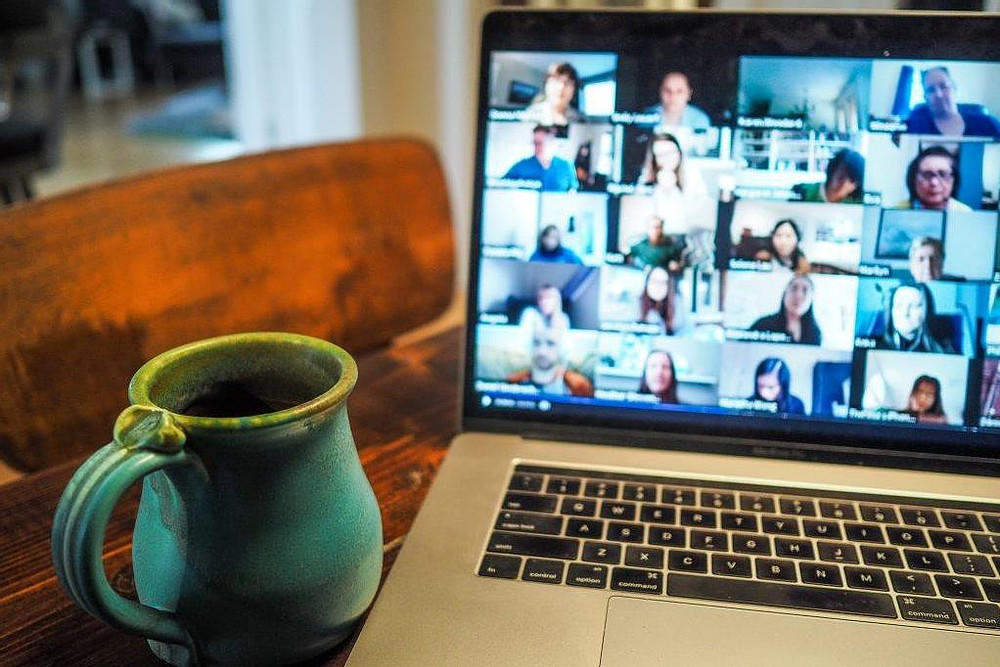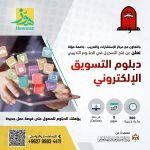Blended learning has been growing in popularity as it has proved to be an effective approach for accommodating an increasingly diverse student population whilst adding value to the learning environment through the incorporation of online teaching resources.([1])
It becomes increasingly evident that blended learning can overcome various limitations related to online learning and face-to-face instruction. A meta-analysis of more than 1,100 empirical studies published between 1996 and 2008 concluded that blended learning proves to be more effective than either online learning or face-to-face instruction. The question now is not whether to blend or not; it is how to design an effective blend. ([2])
Blended Learning combines the best of personalized online learning with face-to-face onsite support and hands-on application. Through its various models, students are given some control over the time, place, path and pace. ([3])
As digital and social media become more and more prevalent in the life of learners, it was only a matter of time before learning became ‘blended’ by necessity.([4])
let’s have an overview of the most common types of blended learning:
1) Face-to-Face Driver Model
It’s the closest type to traditional learning in schools, Traditional instructor-led learning sessions supplemented with technology to allow learners to control their own learning pace. Benefits are role-playing, mentoring, hands-on practice, and feedback. ([5])
Not all students in a class complete a blended learning curriculum. It is ideal for students completing coursework associated with a different grade level, such as students who are learning English at a lower grade level, for example. ([6])
The face-to-face allows students who are struggling or working above their grade level to progress at their own pace using technology in the classroom.
2) Rotation Model
The most common form of blended learning is the rotation model, in which students within one course rotate between online and face-to-face instruction. The face-to-face component may involve full-class or small-group instruction, group projects, or individual tutoring. ([7])
Station-Rotation blended learning is a: “…model (that) allows students to rotate through stations on a fixed schedule, where at least one of the stations is an online learning station. This model is most common in elementary schools because teachers are already familiar with rotating in centers and stations.([8])
It’s easy to be implemented in a single classroom, no need to modify schedules, a small number of devices,good classroom management skills.([9])
A rotational model can also work in any subject. In fact, multi-subject implementation can build habits and cultures for both students and for teachers, vs. a single-subject implementation. Teachers can collaborate, administrators and leaders can provide coaching and support. ([10])
3) Flex Model
 Flex learning is a term that can be used interchangeably with personalized learning. By accessing means of integration of learning in a Learning Management System (LMS.), the students control their learning path, choosing what they to learn. The instructor is usually present in a mentoring capacity, to answer questions.([11])
Flex learning is a term that can be used interchangeably with personalized learning. By accessing means of integration of learning in a Learning Management System (LMS.), the students control their learning path, choosing what they to learn. The instructor is usually present in a mentoring capacity, to answer questions.([11])
Here we will find a course or subject in which online learning is the backbone of student learning, even if it directs students to offline activities at times. Students move on an individually customized, fluid schedule among learning modalities. The teacher of record is on-site, and students learn mostly on the brick-and-mortar campus, except for any homework assignments. The teacher of record or other adults provide face-to-face support on a flexible and adaptive as-needed basis through activities such as small-group instruction, group projects, and individual tutoring.”([12])
4) Online Lab Model
In this scenario, students learn entirely online but travel to a dedicated computer lab to complete their coursework. Adults supervise the lab, but they are not trained, teachers. This not only allows schools to offer courses for which they have no teacher or not enough teachers but also allows students to work at a pace and in a subject area that suits them without affecting the learning environment of other students. ([13])
“In a lab Rotation model, students rotate at fixed points in time between a classroom and computer lab, in which students learn predominantly online. The classroom is generally reserved for other learning activities.”
Difference between Lab rotation model and Station rotation model:
“In station rotation model students are rotating within a given classroom whereas in the lab model they are actually rotating out to a learning lab where they are doing their online learning.”([14])
This blended learning model is entirely digital, with little or no instructor interaction, and takes place either before, during or after training. Learners can access content on mobile phones (mLearning), laptops or tablets. This modality engages and solidifies learning.([15])
5) Self-Blend Model
The self-blend model of blended learning gives students the opportunity to take classes beyond what is already offered at their school. While these individuals will attend a traditional school environment, they also opt to supplement their learning through online courses offered remotely.
In order for this method of blended learning to be successful, students must be highly self-motivated. Self-blend is ideal for the student who wants to take additional Advanced Placement courses, or who has an interest in a subject area that is not covered in the traditional course catalog.([16])
According to this use of self-blending, it is largely focused upon individual students taking some courses online and others face-to-face. However, many today describe blended learning as instances where students learning within an individual course includes a blend of digital and face-to-face learning experiences. With this notion of blended learning in mind, it seems to me that self-blending refers to courses in which individual students or groups of students take the initiative to add or supplement learning experiences in a course with digital and/or face-to-face learning activities. ([17])
A robust LMS can combine diverse content sources under one system to encourage curiosity and growth.
6) Online Driver Model
 students work remotely and material is primarily delivered via an online platform. Although face-to-face check-ins are optional, students can usually chat with teachers online if they have questions.
students work remotely and material is primarily delivered via an online platform. Although face-to-face check-ins are optional, students can usually chat with teachers online if they have questions.
This model of blended learning is ideal for students who need more flexibility and independence in their daily schedules. ([18])
This blended learning model is entirely self-directed and takes place in a digital environment. Learners can engage with an instructor through chat, email or message board. It provides a flexible schedule and personalized learning, but lacks the face-to-face interaction of other types of blended learning. An LMS is the best way to encourage users to direct their own learning while still monitoring their process as they enjoy media and eventually, engage in classroom discussion. ([19])
7) Gamification

gamification
One of the most effective ways to motivate learners is by letting them play! By using gameplay elements such as points or levels, learners feel a little competition and are more motivated to experience the material on their own time.([20])
Typically, gamification works best in a blended classroom when it involves independent, self-paced play. Some edtech tools that meet this requirement include:
Classcraft– In this fantasy-based game, students play as healers, mages, or warriors. After forming teams, they earn or lose points based on classroom performance and behavior. You can also have students “fight battles” against your existing questions.
Play Brighter– Students complete missions by answering questions correctly. You can input your own questions or choose from a bank of over 2,000. Students earn currency that can be used to customize their in-game avatars.
Integrating gamification into your blended classroom helps students take ownership of their learning, increases student motivation, and provides measurable evidence of mastery. ([21])
8). Project-Based Blended Learning
 Blended Project-Based Learning is a model in which the student uses both online learnings—either in the form of courses or self-directed access—and face-to-face instruction and collaboration to design, iterate, and publish project-based learning assignments, products, and related artifacts.([22])
Blended Project-Based Learning is a model in which the student uses both online learnings—either in the form of courses or self-directed access—and face-to-face instruction and collaboration to design, iterate, and publish project-based learning assignments, products, and related artifacts.([22])
The projects should be designed to meet state and local standards. When you combine the material, the use of experts, the ability of the student to post/defend/expand on his/her ideas, to present these ideas in a real-world context and then go back and re-evaluate his/her effort, it is one of the most powerful learning adventures in any classroom.
To develop PBL online lessons a teacher may have to create a theme or allow the students to choose a topic. There are a number of wonderful tools that are great guides for online inquiry or problem-based lessons. The key to doing these activities is how do you do them so that you end up with a quality product? If the student knows the essentials of critical thinking, how to research, and what the grading rubric will be before undertaking the project, it helps facilitate a quality project.([23])
9. Inside-Out Blended Learning
In Inside-Out blended learning, experiences are planned to ‘finish’ or ‘end up’ beyond the physical classroom, but still require and benefit from the unique advantages of both physical and digital spaces.
In both the Outside-In and Inside-Out models, the nature of the ‘online learning’ is less critical than the focus on platforms, spaces, people, and opportunity beyond the school walls. (The ‘online’ components could be a self-directed inquiry and/or formal eLearning courses and curriculum..([24])
The goal of the model is simple enough–not pure academic proficiency, but instead authentic self-knowledge, diverse local and global interdependence, adaptive critical thinking, and adaptive media literacy.
The attempted personalization of learning occurs through new actuators and new notions of local and global citizenship. An Inside-Out School returns the learners, learning, and “accountability” away from academia and back to communities. No longer do schools teach. Rather, they act as curators of resources and learning tools, and promote the shift of the “burden” of learning back to a more balanced perspective of stakeholders and participants.
Here, families, business leaders, humanities-based organizations, neighbors, mentors, higher-education institutions, all converging to witness, revere, respond to, and support the learning of its own community members..([25])
10. Outside-In Blended Learning
In Outside-In blended learning, experiences are planned to ‘start’ in the non-academic physical and digital environments students use on a daily basis, but finish inside a classroom.
This approach to blended learning involves two ways of working. ‘Outside in’ projects go from outside of the classroom and end up in the classroom. The opposite is true with ‘Inside out’ where it starts in the classroom but ends up outside of it.([26])
This could mean traditional letter grades and assessment forms, or less traditional teaching and learning that simply uses the classroom as a ‘closed-circuit’ publishing ‘platform’—a safe space to share, be creative, collaborate, and give and receive feedback that grows student work.
11) Mastery-Based Progression
A critical part of blended learning is the mastery-based progression: enabling students to move forward in their learning at their own pace as they master content rather than based on traditional time structures..([27])
This is challenging work. Mastery-based progression is a different way of thinking about student learning progress and it has significant implications (e.g., no letter grades!). It is new and innovative, and we are still inventing the tools needed to make it possible at scale. So it is important to decide whether your school or district is ready to go on this journey of innovation. Educators need to assess who needs to be on board (e.g., superintendent, principals, teachers, students, parents) and whether they are. It probably makes sense to start working with specific schools, grades, teachers, and / or subjects. Determining where to start should be part of the decision-making process.([28]) ([29])
12) Supplemental learning
The supplemental model of blended learning leverages online course components to help enrich the face-to-face classroom. In the supplemental model, there is typically no real reduction in classroom meeting time. … Offer flexibility: On-demand review learning when they enter the classroom.([30])
Deepen interaction: Enable online collaboration to deepen classroom interactions.
Increase time efficiency: Demonstrate key concepts or foundational material online to make better use of class time.
Offer flexibility: On-demand review learning when they enter the classroom.
Enable review and repetition: Use online modules to cover complex topics for students to access on demand.
One common challenge associated with this model of blended learning is avoiding the “course and a half” dilemma. Because seat time is not reduced and online components are added, the amount of additional material can significantly add to the overall workload for students.([31])
References
[1] Ali Alammary, Judy Sheard, Angela Carbone Monash University, Australia: Blended learning in higher education: Three different design approaches: Monash University, Australia :introductions: https://www.researchgate.net/
[2] The same resource above,p:440
[3]Digital Learning now: Blended Learning Models: https://www.youtube.com/watch?v=woN80GiYsEM&feature=youtu.be
[4] 12 Of The Most Common Types Of Blended Learning : https://www.teachthought.com/learning/12-types-of-blended-learning/
[5] What is Blended Learning? A Guide to Everything You Need to Know: https://elmlearning.com/blended-learning-everything-need-know/
[6]Models of Blended Learning: https://siliconegear.com/blogs/coronavirus/blended-learning
[7] Different faces of blended learning: https://web.archive.org/web/20150923215235/http://www.districtadministration.com/article/different-faces-blended-learning
[8] 12 Of The Most Common Types Of Blended Learning : https://www.teachthought.com/learning/12-types-of-blended-learning/
[9] Digital Learning now: Blended Learning Models: https://www.youtube.com/watch?v=woN80GiYsEM&feature=youtu.be
[10]Rotational models works in any classrooms: https://www.edelements.com/rotational-models-work-for-any-classroom
[11] same source as above.
[12] 12 Of The Most Common Types Of Blended Learning
https://www.teachthought.com/learning/12-types-of-blended-learning/
[13] Tedx talk: Blended learning: the future of education : https://www.youtube.com/watch?v=Mb2d8E1dZjY
[14] The four important models of blended: https://www.educatorstechnology.com/2014/04/the-four-important-models-of-blended.html
[15] What is Blended Learning? A Guide to Everything You Need to Know; previous source.
[16] 6 Models of Blended Learning : https://www.dreambox.com/blog/6-models-blended-learning
[17] 5 Examples of Self-Blended Learning: https://etale.org/main/2013/03/11/5-examples-of-self-blended-learning/
[18] 6 Models of Blended Learning : https://www.dreambox.com/blog/6-models-blended-learning
[19] What is Blended Learning? A Guide to Everything You Need to Know; previous source.
[20] What is Blended Learning? A Guide to Everything You Need to Know, previous source.
[21] GAMIFICATION AND THE BLENDED CLASSROOM: https://www.thetechedvocate.org/gamification-and-the-blended-classroom/
[22] 12 Of The Most Common Types Of Blended Learning
https://www.teachthought.com/learning/12-types-of-blended-learning/
[23]11 steps for effective project blended: https://www.teachthought.com/technology/11-steps-of-effective-project-based-learning-in-a-blended-classroom/
[24] 12 Of The Most Common Types Of Blended Learning
https://www.teachthought.com/learning/12-types-of-blended-learning/
[25] by Terry Heick: The Inside-Out School: A 21st Century Learning Model:
https://www.teachthought.com/the-future-of-learning/inside-out-school-21st-century-learning-model/
[26] What is Inside out and Outside in? (Blended learning explained): https://www.youtube.com/watch?v=WCSflz_unL4
[27] Scott Ellis: The “Why” and “How” of Mastery-Based Progression
https://practices.learningaccelerator.org/insights/the-why-and-how-of-mastery-based-progression
[28] the previous source
[29]The many forms of blended learning: http://www.teacherplus.org/the-many-forms-of-blended-learning/
[30] What is blended learning? https://teachingwithtech.lss.wisc.edu/m3w1.htm
[31] The same source above






